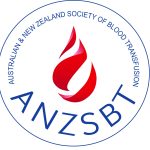1941 Levine et al outline mechanism of Rh Haemolytic Disease of the Newborn.
1941 R.J. Walsh appointed Director of NSW Blood Bank & commissioned as Commanding Officer of the Serum Preparation Unit (army). Australian Red Cross “absorbed” all NSW blood donor services.
1942 In December, as Kokoda Track battle won & Japanese attack on Papua ceased, 1st boxes of blood dispatched from Sydney to New Guinea.
1943 Louttit, Mollison & Young publish work on ACD for blood storage.
During WWII As Serum Hepatitis identified in UK & US, a focus on blood collection, preservation & transfusion are high priorities. American Red Cross collects 13 million plasma units to treat battlefield haemorrhagic shock. Acid-citrated dextrose solution developed by Loutit & Mollison in England (1943) extends shelf-life of red cells to 21 days. In the US, Edwin Cohn develops plasma fractionation producing albumin as a volume expander. This advance in protein chemistry led to further preparation of immunoglobulins, prothrombin, fibrinogen & antihaemophilic factor (factor VIII) fractions.
